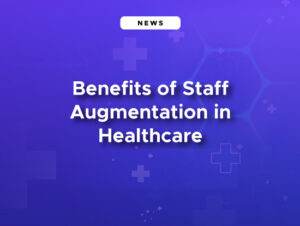The field of healthcare has recently demonstrated how electronic health record (EHR) systems have revolutionized the way patient information is managed and shared. Today, the formerly reluctant healthcare industry recognizes the potential of EHR systems to transform practice workflows for a more seamless practice protocol and patient experience.
While EHR technology is boundless in its usefulness and functionality, its implementation can be tricky. Before we dive into the issues pertaining to EHR implementation, let’s first explore the technology itself.
What are EHRs?
Electronic health records technology is a platform, available in both web-based and cloud-based versions, that provides an interactive interface for the management, storage, and transfer of useful healthcare data. EHR systems allow patients to store large amounts of patient data, as well as communicate effectively and safely with other organizations and health systems for the purpose of providing efficient healthcare to patients entering the practice.
Additionally, this technology can help manage physician and appointment schedules, exhibit patient data in an organizational format, and offer several specialty-specific templates for better analysis of patient data and easier management of diagnosis and treatment planning processes.
EHR implementation promises improved patient care, streamlined clinical workflows, and enhanced efficiency.
However, despite its numerous advantages, the road to successful EHR implementation is often fraught with challenges. This article aims to shed light on healthcare organizations’ top EHR implementation challenges and discuss strategies to overcome them.
Resistance to Upgrade
One primary hurdle in EHR implementation is the resistance to change from healthcare providers and practice staff. The transition from traditional paper-based records to a digital system requires significant adjustments in workflows and processes. Although highly beneficial, having to upgrade to a digital platform may require tedious efforts to remove paper-based patient histories.
Therefore, overcoming resistance involves thorough communication, comprehensive training programs, and fostering a culture of acceptance and adaptability. Involving staff members in the decision-making process and highlighting the benefits of EHR adoption can help diminish the possibility of staff resistance to EHR implementation.
Cost and Financial Considerations
Implementing an EHR system can be a substantial financial investment for healthcare organizations. Costs include software acquisition, hardware upgrades, data migration, staff training, and ongoing maintenance.
Additionally, potential revenue losses during the transition phase can create further financial strain. Proper financial planning, exploring government incentives or grants, and negotiating pricing with vendors are crucial steps in managing the financial challenges associated with EHR implementation.
Interoperability and Data Integration
The seamless exchange of patient data across different EHR systems and healthcare providers remains a significant challenge. This can only be achieved through interoperable EHR systems. Interoperability equips the system interface with the ability to interact with other health systems, making data exchange efficient and secure.
Interoperability issues can impede information sharing, coordination of care, and informed decision-making. Healthcare organizations should prioritize EHR systems that adhere to interoperability standards and work towards establishing data exchange agreements with external partners. Collaboration with vendors, industry organizations, and government initiatives to promote data interoperability can help address this challenge.
Data Security and Privacy Concerns
With the digitization of sensitive patient information, ensuring data security and privacy becomes paramount. Healthcare organizations must comply with strict regulations, such as the Health Insurance Portability and Accountability Act (HIPAA), to protect patient data from breaches or unauthorized access. Healthcare-related data, including patient data, is the most valuable and, therefore, far more vulnerable to cyberattacks.
Implementing robust security measures, conducting regular audits, training staff on data privacy best practices, and employing encryption technologies are essential steps to mitigate the risks associated with data security.
Workflow Disruptions and Staff Productivity
During the initial stages of EHR implementation, workflow disruptions are inevitable as healthcare providers adjust to the new system. This can temporarily impact staff productivity and the patient experience. However, regular staff training and readily available educational resources can help practice personnel familiarize themselves with the new system quickly.
Healthcare organizations should conduct thorough workflow assessments before implementation, identify potential bottlenecks, and develop mitigation strategies. Offering comprehensive training and ongoing support to staff members and optimizing the EHR system to align with existing workflows can help minimize disruptions and maximize productivity.
Conclusion
EHR implementation holds immense potential for transforming healthcare delivery. The technology is secure and efficient and helps run practice workflows in a manner that is not only smooth but also time-saving.
However, the implementation of this technology can present several challenges that must be overcome. By addressing staff resistance, assessing financial considerations, prioritizing EHR interoperability, and empowering practice staff, one can ensure a smooth onboarding to the EHR platform.
Additionally, ensuring data security and proactively managing workflow disruptions are also imperative to helping healthcare organizations navigate the path to successful EHR implementation. Embracing these challenges as opportunities for growth and improvement will ultimately lead to a seamless digital healthcare environment, enhancing patient outcomes and the overall quality of care.




